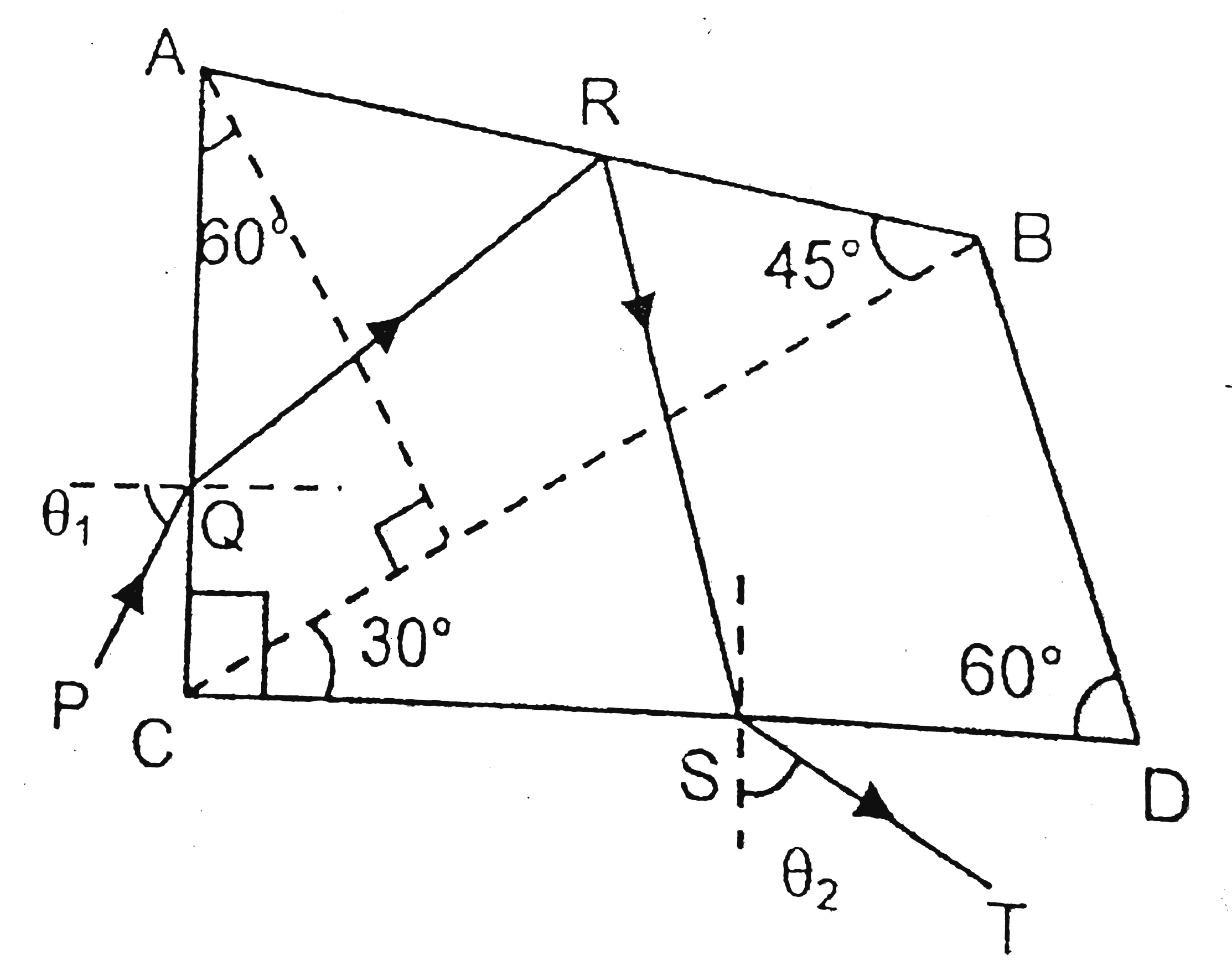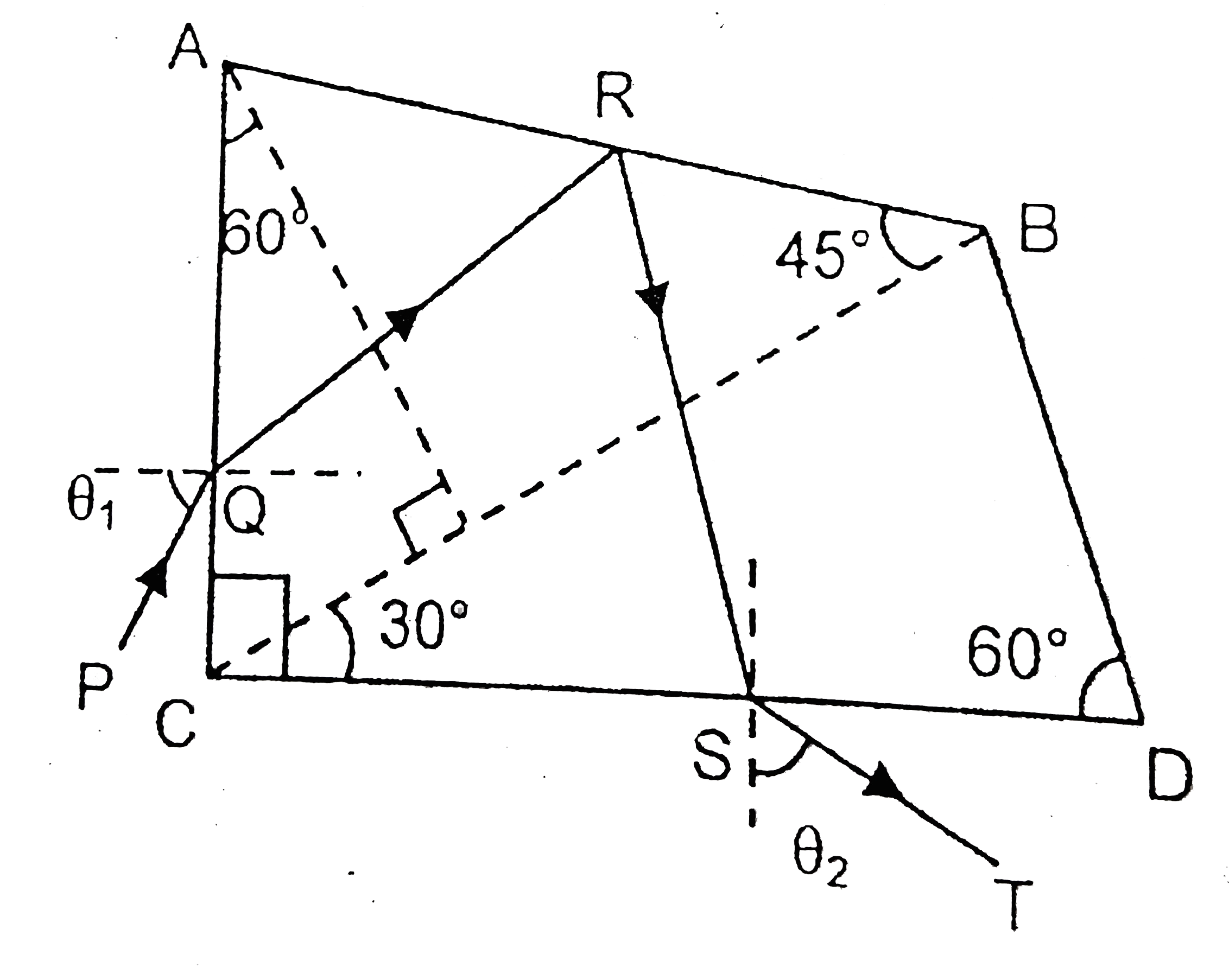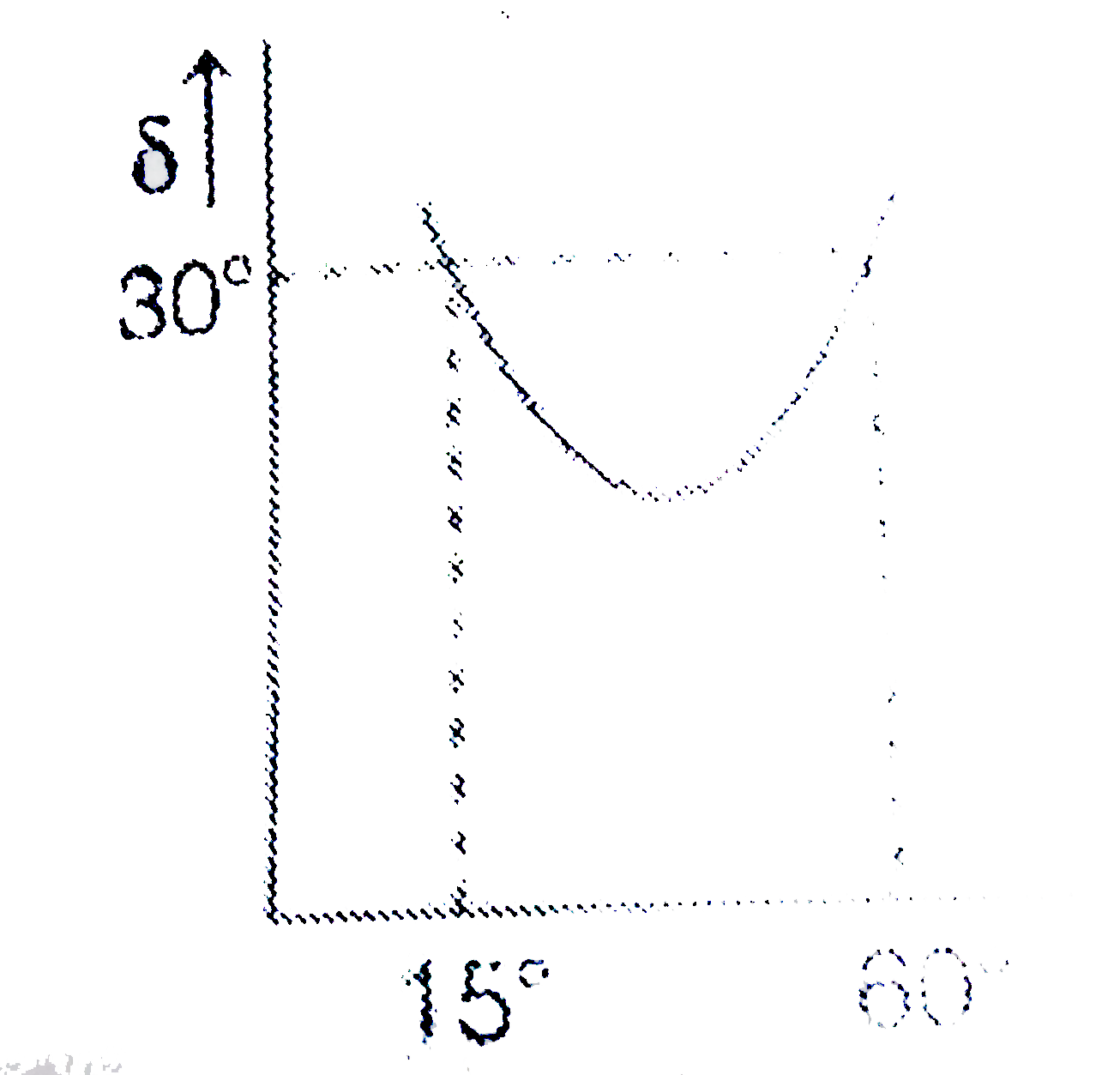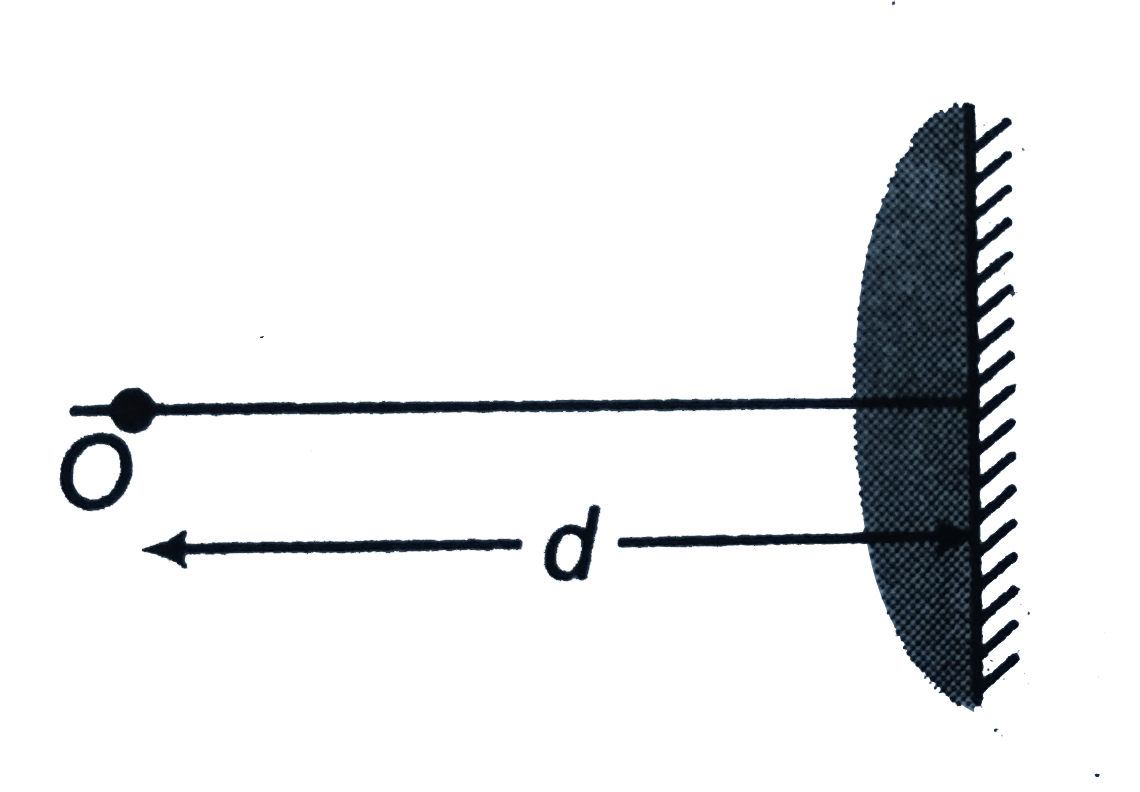
The figure shows a constant deviation prism ABCD. The incident ray is PQ and the emergent ray is ST. Although it is made up of one piece of glass, but it is equivalent to two 30∘−60∘−90∘ prism and one 45∘−45∘90∘ prism.The angle θ1 is the angle of incidence on face AB. The path of the ray inside the prism is indicated in the figure. for this prism μ=2sinθ1.
Q. The total deviation of incident ray when it emerges out of the prism is
60∘
30∘
45∘
90∘
The correct Answer is:A
let r be angle of refraction at θ1
μ=sinθ1sinr,sinθ1=μ2⇒sinr=12,r=30∘
considering ABC as a triangular prism r+r′=A
30∘+r′=75∘⇒r′=45∘
Thus ray is incident on AB at 45∘ it is reflected at the same angle on to CD.
From the figure ∠RSD=360∘−(45∘+135∘+60∘)=120∘
(considering the quadrilateral)
∵ angle of incidence at CD=120∘−90∘=30∘
⇒θ1=θ2
∵ total deviation of ray =(θ1−30∘)+(180∘−90∘)−(θ2−30∘)=90∘
Similar Questions

The figure shows a constant deviation prism ABCD. The incident ray is PQ and the emergent ray is ST. Although it is made up of one piece of glass, but it is equivalent to two 30∘−60∘−90∘ prism and one 45∘−45∘90∘ prism.The angle θ1 is the angle of incidence on face AB. The path of the ray inside the prism is indicated in the figure. for this prism μ=2sinθ1.
Q. The ratio θ1θ2 isView SolutionFigure shows graph of deviation δ versus angle of incidence for a light ray striking a prism. Angle of prism is
 View Solution
View SolutionRefractive index of a prism is √7/3 and the angle of prism is 60∘. The minimum angle of incidence of a ray that will be transmitted through the prism is
View SolutionThe angle between the incident ray and the emergent ray in case of a prism is called angle of prism. _________
View SolutionThe angle between the incident ray and the refracted ray of a prism is called angle of deviation.
View SolutionTwo light rays 1 and 2 are incident on two faces AB and AC on an isosceles prism as shown in the figure. The rays emerge from the side BC. Then,
 View Solution
View SolutionLight ray is incident on a prism of angle A=60∘ are refractive index μ=√2. The angle of incidence which the emergent rays grazes the surface is given
View Solution
A ray of light incident on one of the face of a prism as shown. After refraction through this surface ray is incident on base of the prism. The refractive index of the prism is √3. The net deviation of the ray due to prism isView SolutionThe refractive index of material of a prism of angles 45∘, −45∘, and −90∘ is 1.5. The path of the ray of light incident normally on the hypotenuse side shown in
View SolutionIf the critical angle for the material of a prism is C, and the angle of the prism is A, then there will be no emergent ray when
View Solution

